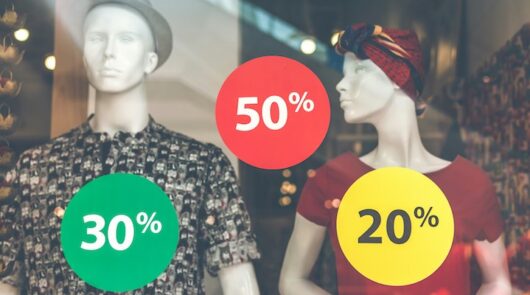Australian retail is evolving at pace, and consumer expectations are higher than ever. Digital shopping habits are now firmly embedded, and this means that brands that fail to adapt risk being left behind.
Wunderkind’s 2025 Australia Consumer Insights Report provides a deep dive into what’s shaping online retail this year, based on responses from 500 Australian consumers. From the rise of direct-to-brand shopping to the growing demand for personalisation, here are the most important takeaways – and what they mean for retailers looking to stay ahead.
1. Mobile shopping is non-negotiable, but desktop still matters
The shift to mobile is complete: 95 per cent of Australian consumers now shop via their smartphones, with usage even higher among Gen X (99 per cent) and Millennials (97 per cent).
However, don’t count desktops out just yet – Boomers (79 per cent) and male shoppers (76 per cent) still prefer larger screens for research-heavy purchases. Retailers should prioritise mobile-first experiences while ensuring the desktop experience remains a seamless and feature-rich alternative for those who prefer it.
2. Younger consumers are shopping more often
Online shopping is no longer an occasional activity – it’s becoming a weekly habit, especially for younger consumers. More than half of Gen Z (51 per cent) and 41 per cent of Millennials shop online multiple times per week, presenting a huge opportunity for brands to cultivate loyalty.
For Boomers, shopping remains more deliberate (only 28 per cent shop this frequently), meaning trust, reliability, and perceived value are key drivers for engagement with this demographic.
3. Direct-to-brand shopping is gaining momentum
Marketplaces like Amazon and Ebay still lead (46 per cent of shoppers use them regularly), but more consumers are turning to brand websites for exclusivity, better pricing (54 per cent), and personalised experiences.
To capitalise on this shift, brands need to own their customer relationships by investing in identity resolution technology that enables personalised email and SMS marketing. The brands that can recognise, engage, and retain their own customers – rather than relying on third-party platforms – will build stronger, more profitable relationships.
4. Cart abandonment: a persistent challenge
If your brand struggles with abandoned carts, you’re not alone. Shipping fees (46 per cent) are still the biggest dealbreaker, particularly for Gen X (60 per cent) and Millennials (44 per cent). Other key barriers include out-of-stock items (17 per cent) and complicated checkouts (13 per cent). Retailers can combat this by:
- Offering free shipping thresholds to encourage higher spending.
- Streamlining checkout flows with guest checkout and one-click payment options.
- Deploying cart abandonment emails and SMS reminders to recover lost sales.
5. AI-powered personalisation is a key growth opportunity
Personalisation is no longer a “nice to have.” Fourty-two per cent of Millennials and 38 per cent of Gen Z are excited by AI-driven shopping experiences that tailor recommendations and messaging to their preferences.
But not everyone is convinced – only 21 per cent of Boomers feel comfortable with AI-powered retail experiences. For brands, this means ensuring AI personalisation is transparent, relevant, and adds real value to the customer journey.
6. Content is a major driver of repeat engagement
Consumers aren’t just engaging with brands when they’re ready to buy. The right content strategy can keep them coming back, but different demographics respond to different types of content:
- Boomers (76 per cent) and Gen X (68 per cent) are most influenced by promotions and discounts.
- Gen Z and Millennials (46 per cent) are highly driven by customer reviews.
- Men (20 per cent) and Boomers (19 per cent) are more likely to revisit for practical product guides.
Retailers should, therefore, take a multi-faceted approach to content marketing, balancing promotions with informative and trust-building content to drive repeat engagement.
The bottom line: A data-driven, customer-centric future
Retail in 2025 will be defined by mobile-first shopping, direct-to-brand engagement, AI-driven personalisation, and content-led marketing. The brands that leverage first-party data, create seamless customer experiences, and invest in personalisation will be best positioned to drive growth.
For a deeper look at what’s driving Australian consumers in 2025, download Wunderkind’s full report here. To learn more about unlocking your owned channel revenue with Wunderkind’s industry-leading identity resolution technology, check out this performance marketing solutions overview, or get in touch.







